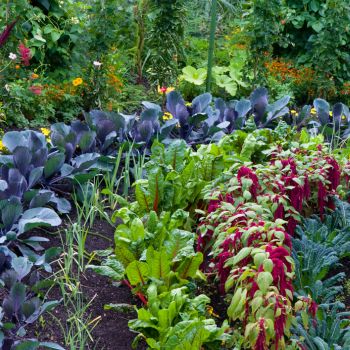Hi friends,
Spring is always a busy time in the garden with new shoots appearing and the promise of bumper crops of veggies, herbs and flowers in the months to come. While the warmer weather is just starting to entice gardeners in cool climates outside, those in warmer areas can plant a huge variety of vegetables now. Among many other veggies, potatoes can be planted in most areas of Australia in spring, and we still have most varieties available as well as new stock of potato grow bags.
We’d like to thank all our customers for your patience during our busiest time of the year. Our team is working very hard to pack and send your orders, however is it currently taking us 5 to 7 business days to dispatch orders, plus Australia Post delivery time. You can check our postage & payment page for up-to-date dispatch times. Australia Post is also experiencing delays with deliveries.
Our best wishes go to everyone who’s currently in lockdown; we hope you’re finding some distraction and solace in your gardens this spring.
Seeds to Sow in September
For most gardeners September is the busiest month for sowing vegetables including amaranth, capsicum, carrot, corn, leek, lettuce, radish, silverbeet and of course tomato. Early spring is the ideal time to grow coriander to get a good harvest before hot weather causes plants to bolt to seed. It's also warm enough to plant basil, chervil, chives, dill, parsley and perilla. Flower growers can sow warm-season annuals including alyssum, aster, cosmos, marigold, snapdragon and zinnia.
Other seeds that can be sown in September can be found by clicking the links below:
▩ Cold Climate: Tasmania, Melbourne, Mt Gambier, Canberra, etc.
▩ Moderate Climate: Sydney, Perth, Adelaide, etc.
▩ Warm Climate: Brisbane, Bundaberg, Carnarvon, etc.
▩ Tropical Climate: Broome, Darwin, Cairns, Townsville, etc.
▩ Not sure which climate? Click here.
Garden Tips for September
Seedlings: Gardeners in warm climates can raise seedlings outdoors or sow veggies such as carrots, beetroot and beans directly in the garden. In cooler climates, raise seedlings indoors and transplant them only when all danger of frost has passed. If you’re unsure whether it’s warm enough to plant in your area, a soil thermometer is a handy tool to gauge how quickly your soil is warming up. For all climates seedlings should be protected from snails and slugs and kept sheltered from cold nights or very windy conditions.
Feed: Fertilise very small seedlings with dilute seaweed concentrate, and add compost or aged manure to vegetable and herb beds before you transplant seedlings. Compost added now and again in mid-summer will sustain plants during the entire growing season, or you can use a fertiliser specifically for vegetables, herbs or flowers. Fruit trees will benefit from a top dressing of compost and aged manure. You can combine this with fruit and flower fertiliser to provide nutrients to boost flower and fruit production.
Weeds: The vegetables, herbs and flowers you plant now aren’t the only seeds that respond to warmer weather. September is also the main growing season for weeds, and removing them while they’re small will save you time and effort later in the growing season. If you have large areas of weeds, consider adding layers of wet newspapers topped with a thick layer of mulch to smother any new growth.
Containers: Spring is a good time to plant up containers with mixes of cut-and-come-again veggies such as loose leaf lettuce, bunching onions and soft herbs. Seeds of annual flowers can also be sown in pots now for a brilliant summer display. Always use a good quality potting mix, protect young plants from snails and slugs and position pots where they will receive at least 6 hours of sun a day. Quick-growing flowers and vegetables will also benefit from regular feeding with liquid fertiliser.
Lawn: As the weather warms up lawns will start to grow more rapidly and will need more frequent mowing. If your lawn is struggling after winter try raking it to remove debris and thatch, aerating the soil with a garden fork and sowing seed to fill in bare patches. Fertilise now, water deeply and set the mower to the highest setting for a thriving lawn come summer. Controlling weeds early in the growing season will save a lot of time and effort later.
Indoor plants: Houseplants often grow slowly if at all during winter but will show signs of new growth as the weather warms. Treat them to a makeover by pruning any dead or damaged leaves, applying fertiliser and washing dust off the foliage. Repot plants that have become rootbound or replace the top 5 to 8cm of potting mix for other pots. Reposition plants away from direct sunlight which may burn the leaves.
.jpg)





